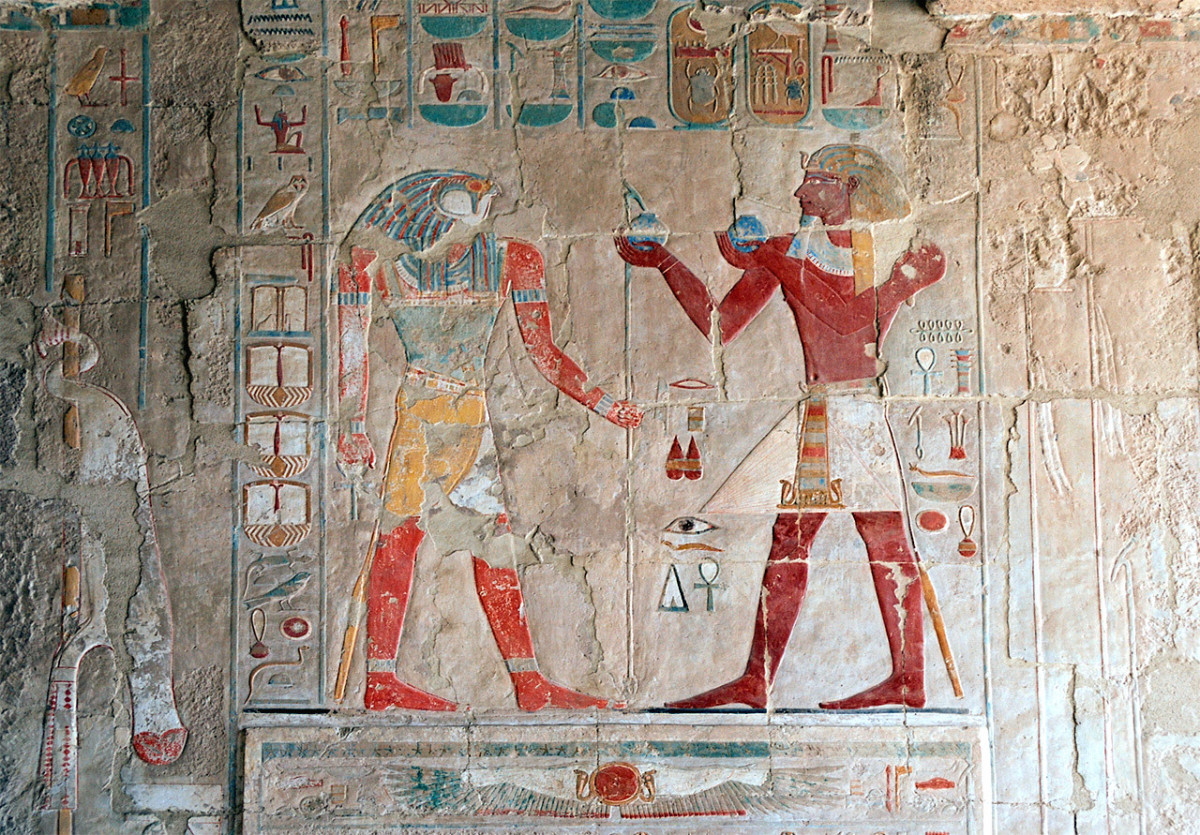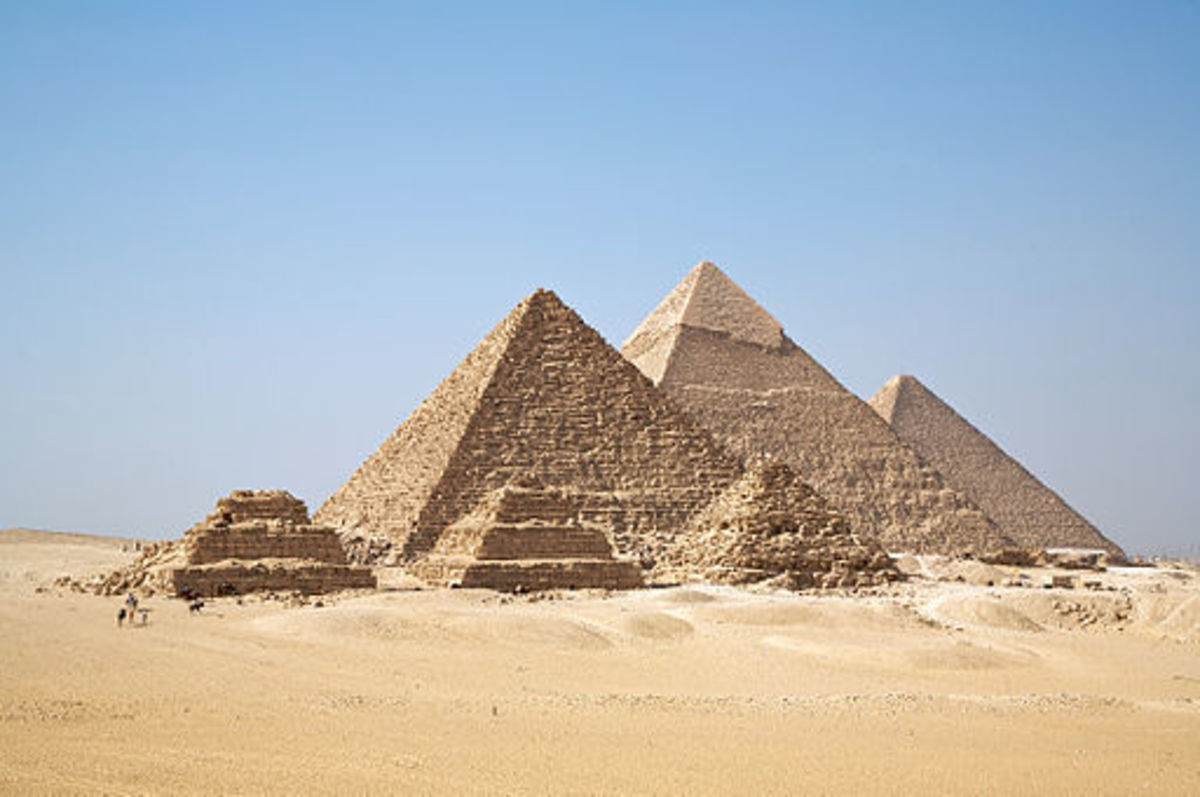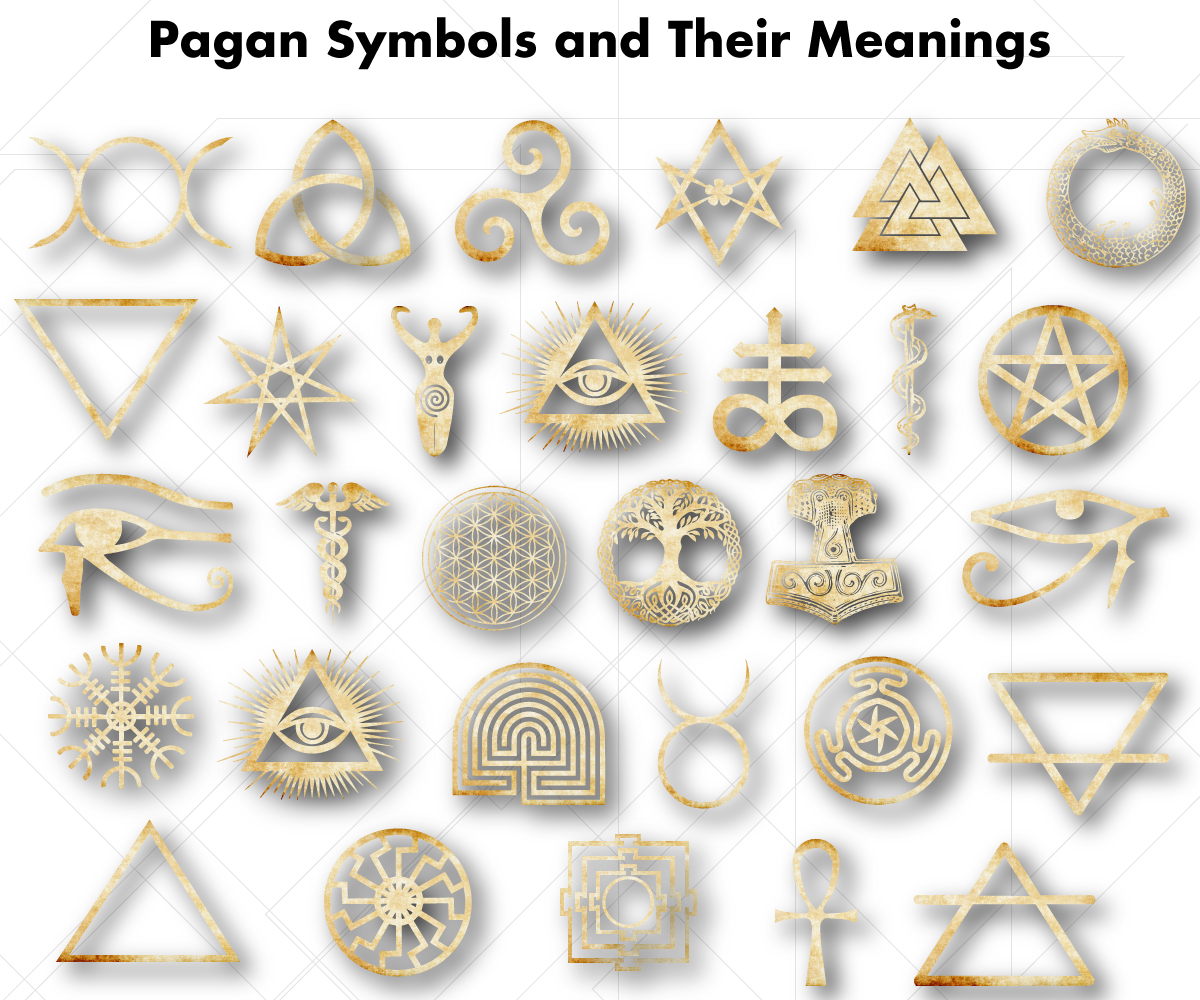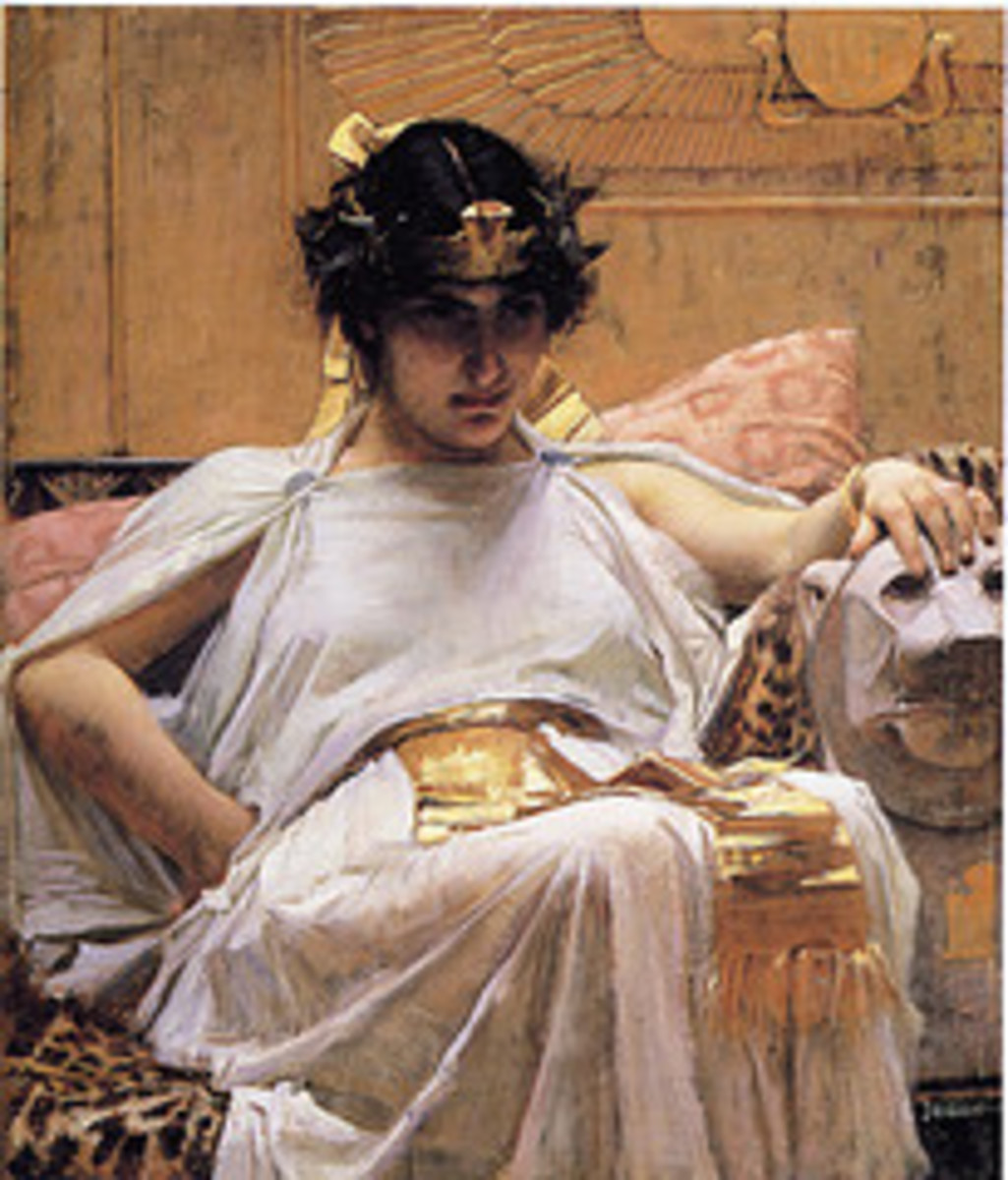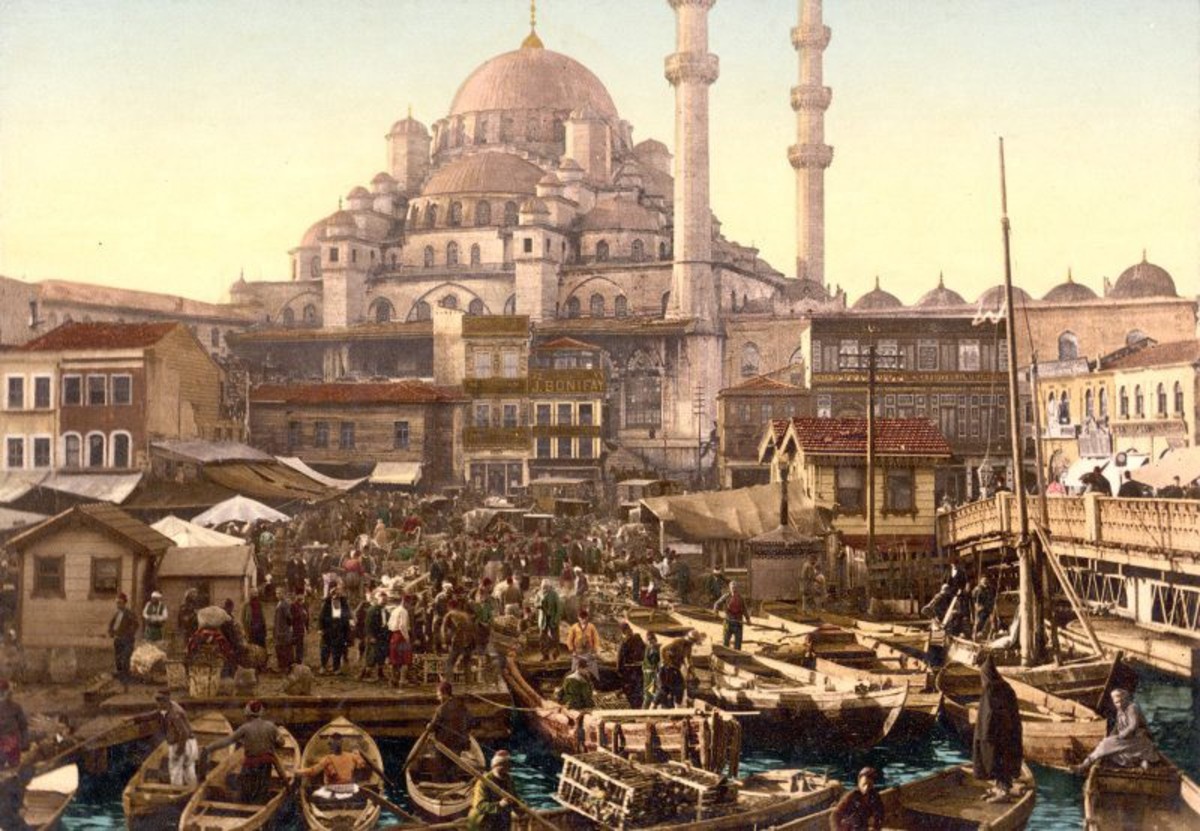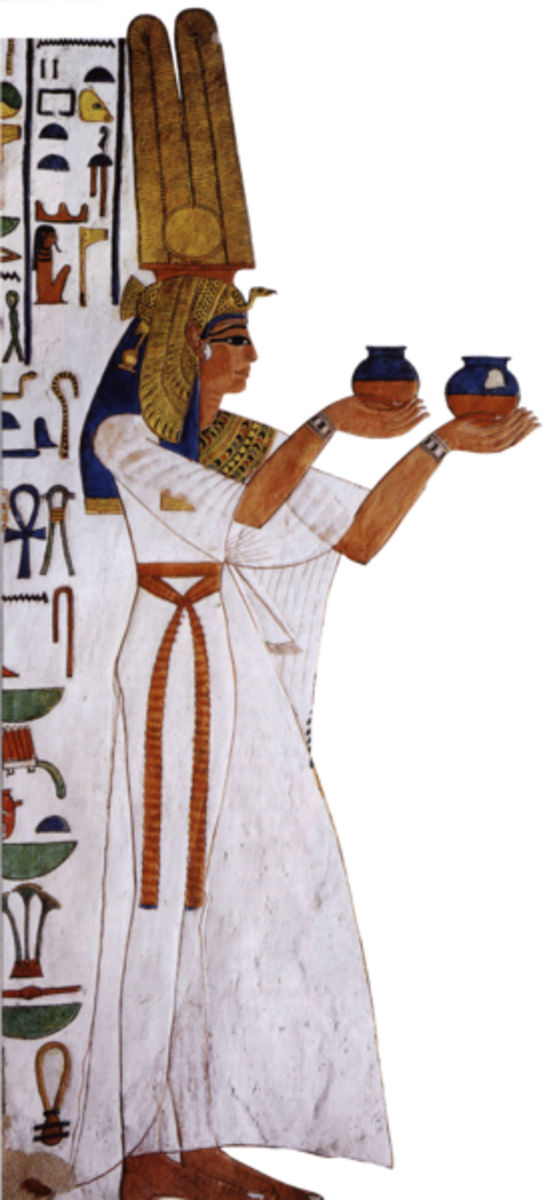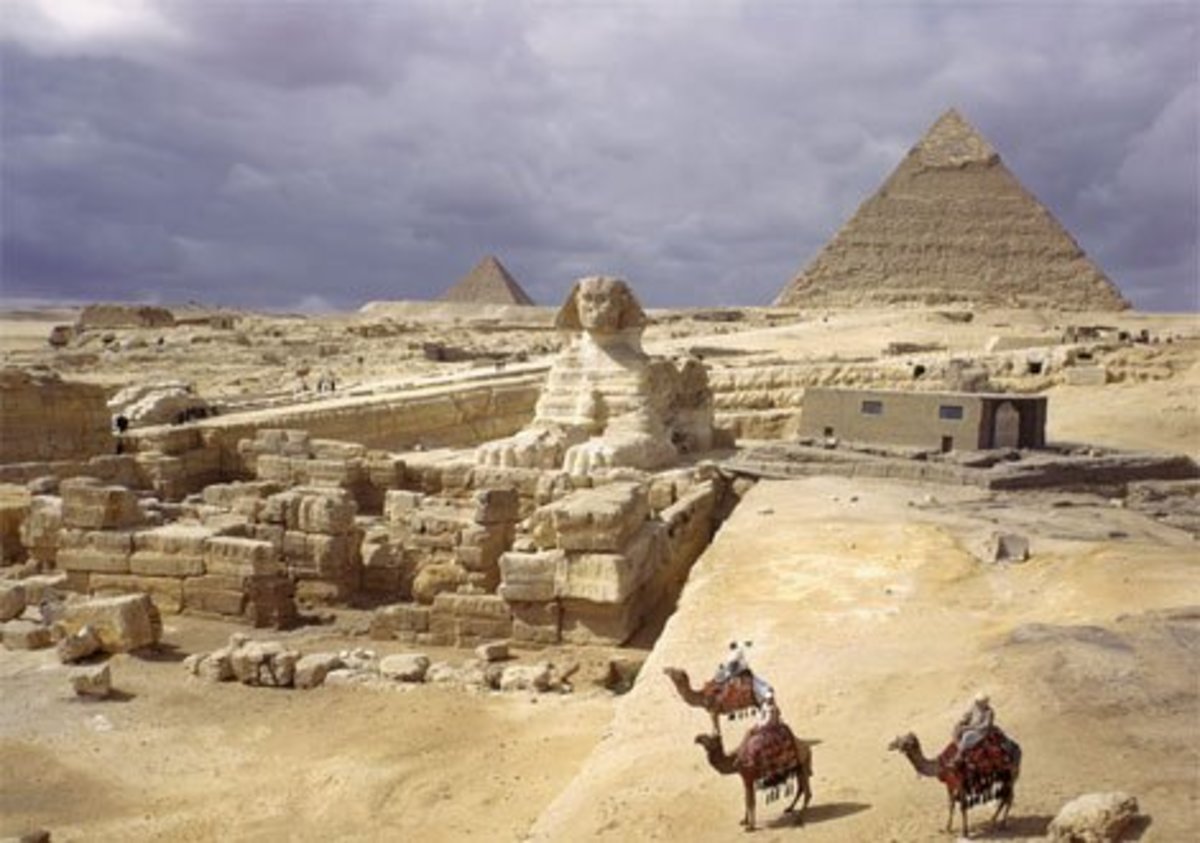- HubPages»
- Education and Science»
- History & Archaeology»
- History of the Middle East
Symbols of Ancient Egypt
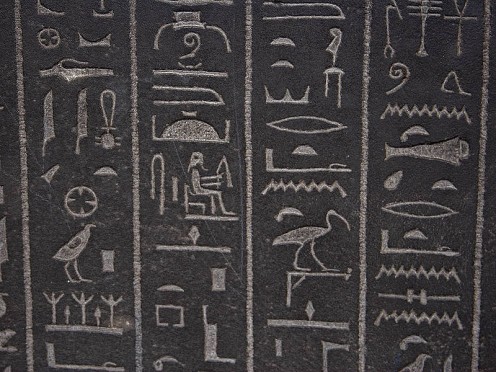
Introduction
The civilization of ancient Egyptian prospered for over 4,000 years. Religion and magic where considered powerful and as having the ability to protect people from harm or to win them favour with the gods. Symbols were used in the construction of their temples, tombs and monuments, in pottery and pictures and as talismans an amulets.
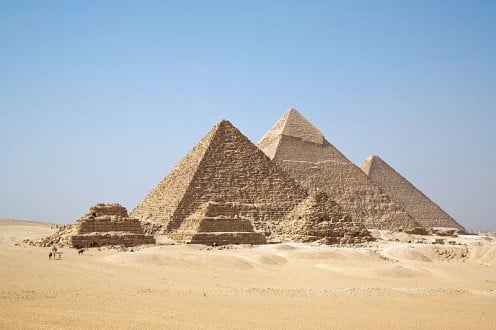
The Pyramids
The ancient Egyptians regarded the pyramids as a a symbolic stairway to heaven. They believed they allowed the dead kings to ascend from Earth and into the afterlife by helping them reach the dark spaces in the night sky between the stars. Mummys were placed within the pyramids with all the items they may need in their journey to the afterlife.
The pyramids where built on the west bank of the Nile because in Egyptian mythology the realm of the dead was associated with the setting sun.

Ankh
Probably one of the best known of Egyptian symbols, the ankh symbolises life in the human and divine aspects. The ankh is associated with air and water and these two elements were believed to be vital for life. Gods where often shown holding an ankh to a Pharaoh or queens nose to gift them eternal life.
The ankh is carried by the dead in funeral rites to ensure safe passage to the next life and was believed to be the key that unlock the gates of death when held upside down.
Some people believe that the top loop represents a vagina and the crosspiece, a penis. And so, together the ankh symbolises the creation of life.
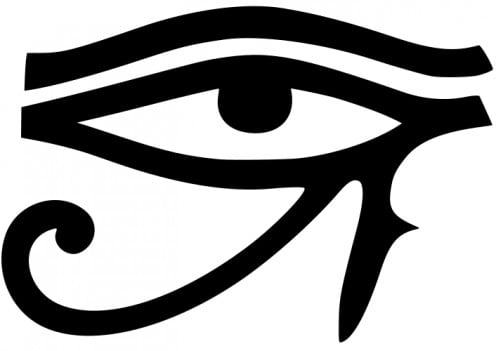
Eye of Horus
The Eye of Horus is used as a symbol of protection, power and good health. It is often used in amulets and talismans.
Horus lost his eye in a battle with Set. Thoth restored Horus´ eye and gave it the name 'Wadjet' which means whole or healthy. The eye is also used in measuring medicine ingredients. The symbol is divided into six pieces, which represent the shattering of Horus' eye in the battle with Set. Each piece corresponds with one of the six senses (smell, sight, touch, taste, hearing and thought) and a fraction.

Jackal
The god of death, known as Anubis was shown as a man with the head of a jackal. He is believed to guard tombs as well as ruling over the underworld and embalming process. Anubis would guide, comfort and sustain the souls of the dead until the moment of judgement.
The jackal is also seen as the protector of the liver and was called upon to ward off illness.
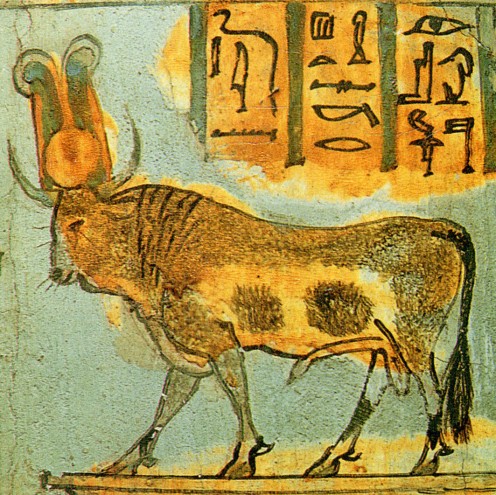
Bull
In ancient Egypt some animals were considered divine and had their own cults. Bulls where seen as powerful and where associated with the Pharaohs. Once a bull had been declared an incarnate of a god, it would live in luxury quarters and mummified and buried when it died. The Abis bulls were believed to actually host the god. One myth tells that he was the living embodiment of Ptah while he lived and Osiris when he died. There could only be one Apis bull at a time and the search would begin for another only when the present died.
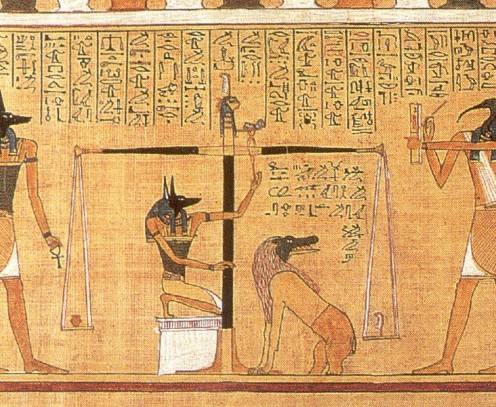
Heart
After mummification the heart was the only organ left in the body. Ancient Egyptians regarding the heart as the centre of a human being and the place of intelligence, truth and wisdom and so essential in the afterlife. It was believe that each person was judged based on their actions during life. The gods would weigh the heart again the feather of justice. If he scales balanced the deceased was permitted to enter the Underworld but if the scales tipped because the heart was heavy with the weight of the persons wrong doings it would be eaten by Ammit and the person would cease to exist - a terrifying thought in ancient Egypt.

Lotus
The lotus which is also known as the Egyptian blue lily grows along the Nile and is was a symbol of sun, creation and rebirth to the Egyptians. The lotus was sacred to Horus and is also the symbol of Nerfertem, the god of healing.

Scarab Beetle
The scarab beetle is a symbol of new life and resurrection. To the Egyptians the scarab rolling it's ball of dung represented the suns journey through the sky each day. The beetles where often painted carrying a huge ball (the sun). Scarabs are sometimes shown as having falcon wings and are often used in amulets for protection.
© 2012 Claire


